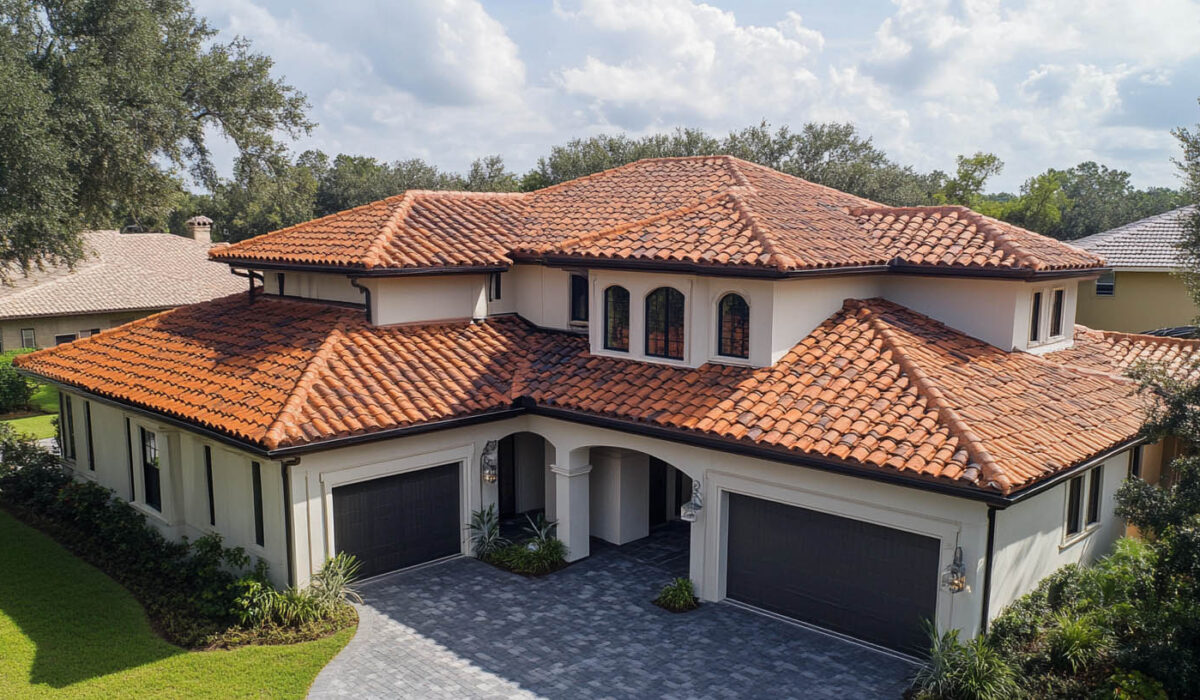Concrete roof tiles have been a popular roofing material for decades due to their durability, aesthetic appeal, and weather resistance. A well-maintained concrete tile roof can last between 50 and 75 years, making it a long-term investment for homeowners. While concrete tiles are highly resilient, their lifespan depends on several factors, including climate conditions, installation quality, and regular maintenance.
Factors That Influence the Lifespan of Concrete Roof Tiles
Structural Weight and Load Considerations
Concrete tiles are among the heaviest roofing materials, weighing between 600 and 1,100 pounds per square (100 square feet). This weight requires a strong underlying structure to prevent sagging or collapse over time. Homes that were not initially built to support such heavy roofing materials may require structural reinforcements, which add to the overall cost of installation.
Water Absorption and Weather Resistance
Concrete tiles are porous, meaning they can absorb moisture when exposed to rain, snow, or high humidity. Without a proper waterproof sealant, this water absorption can lead to mold growth, freeze-thaw damage, and gradual deterioration of the underlayment beneath the tiles. Regular application of a high-quality sealant can significantly extend the life of a concrete tile roof by preventing moisture infiltration.
Underlayment Lifespan and Replacement
The underlayment of a roof acts as a secondary barrier against water penetration. While concrete tiles can last up to 75 years, the underlayment typically needs replacement after 20 to 30 years. Because replacing the underlayment requires removing and reinstalling the concrete tiles, this maintenance process can be costly and time-consuming.
Efflorescence and Surface Appearance
Efflorescence is a natural phenomenon that occurs when water-soluble salts in concrete rise to the surface and form a white, chalky residue. While efflorescence does not impact the structural integrity of the tiles, it can make the roof appear older or worn. Over time, rain and weathering naturally wash away this residue, but regular roof cleaning can help maintain the tiles’ visual appeal.
Maintenance and Repairs
Proper maintenance is essential for extending the life of a concrete tile roof. Homeowners should:
- Inspect for and replace cracked or broken tiles promptly to prevent leaks
- Remove moss, mold, and mildew buildup to prevent moisture retention
- Apply sealants periodically to enhance water resistance
- Avoid walking on the roof, as concrete tiles can crack under excessive weight
Regular maintenance by a professional roofing contractor can help homeowners maximize the lifespan of their investment.
Concrete Roof Tiles vs. Other Roofing Materials
| Feature | Concrete Roof Tiles | Clay Roof Tiles | Asphalt Shingles | Metal Roofing | Composite Roof Tiles |
| Lifespan | 50-75 years | 75-100 years | 15-30 years | 40-70 years | 50+ years |
| Weight | Heavy | Heavy | Lightweight | Lightweight | Lightweight |
| Weather Resistance | Moderate | High | Low | High | High |
| Maintenance | Moderate | High | High | Low | Low |
| Installation Complexity | High | High | Low | Moderate | Low |
| Cost | Moderate to High | High | Low | Moderate to High | Moderate |
While concrete tiles offer impressive longevity, they come with significant weight and maintenance requirements. For homeowners seeking a durable, low-maintenance alternative, composite roof tiles have become an attractive solution.
Composite Roof Tiles: A Modern Alternative
Lightweight and Easy to Install
Unlike concrete tiles, which require specialized tools and structural reinforcements, composite tiles are lightweight and can be installed using standard roofing tools. This reduces both labor costs and installation time.
Exceptional Durability with Minimal Maintenance
Composite tiles are engineered to last 50 years or more without the need for sealants, waterproofing treatments, or frequent repairs. Their non-porous surface prevents water absorption, eliminating the risk of mold, mildew, and freeze-thaw damage.
Energy Efficiency and Sustainability
Many composite roof tiles are made from recycled materials, making them an eco-friendly choice. Additionally, their reflective properties help regulate indoor temperatures, reducing energy costs for homeowners.
Aesthetic Versatility
Composite tiles can replicate the appearance of natural slate, clay, or cedar shake, providing homeowners with a wide range of design options. Their color consistency and UV-resistant coatings ensure long-lasting curb appeal.
Tile Roofing San Diego: A Trusted Roofing Partner
Located in San Diego, CA, Tile Roofing San Diego is a premier provider of high-quality roofing solutions for residential and commercial properties. As an Owens Corning Preferred Contractor and a GAF Master Elite Contractor, we offer industry-leading warranties and expert craftsmanship. By combining traditional techniques with modern roofing innovations, we deliver durable, aesthetically pleasing, and long-lasting roofing solutions tailored to our clients’ needs.
Frequently Asked Questions
1. How often should concrete roof tiles be sealed?
To maximize their lifespan, concrete roof tiles should be sealed every 5 to 10 years, depending on climate conditions and exposure to moisture.
2. Can individual concrete tiles be replaced if they break?
Yes, individual tiles can be replaced. However, matching the color and texture of the existing tiles can be challenging due to natural weathering over time.
3. How does composite roofing compare to concrete tiles in cost?
While composite roofing may have a slightly higher initial cost, its minimal maintenance requirements and extended lifespan make it a more cost-effective option in the long run.
4. Do concrete tiles fade over time?
Yes, exposure to UV rays and weather elements can cause concrete tiles to fade. Periodic repainting or sealing can help maintain their original appearance.
5. Is composite roofing more energy-efficient than concrete tiles?
Yes, composite tiles are designed to reflect heat and improve insulation, helping homeowners reduce cooling costs in warm climates.
Conclusion
Concrete roof tiles provide durability and longevity, but they require proper maintenance and structural support due to their weight. For homeowners looking for a low-maintenance, long-lasting alternative, composite roof tiles offer a superior solution. With advancements in roofing technology, homeowners now have more options than ever to achieve the perfect balance of aesthetics, durability, and efficiency.Explore Spanish-style metal tile roofing as a modern and durable alternative—click here to learn more.

